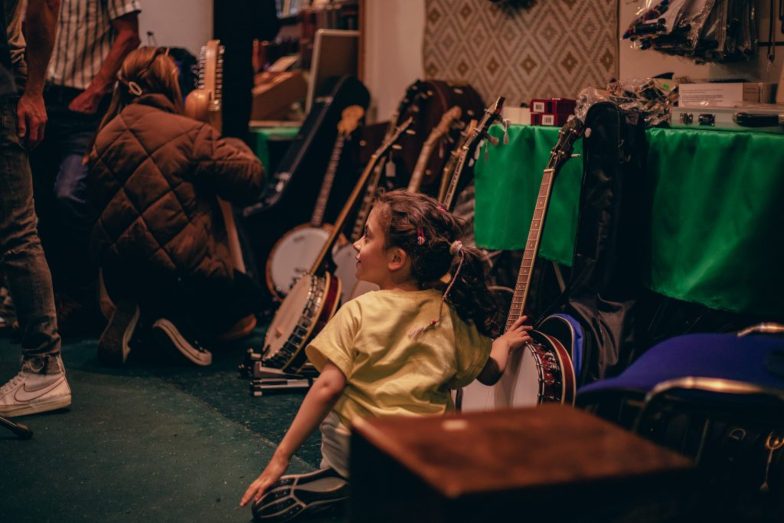
Main Banjo Types at a Glance
What are the different types of banjos? | Quick Overview
- 4-string tenor banjo — Irish traditional sessions
- 5-string banjo — bluegrass, folk, Americana
- Plectrum banjo — early jazz & rhythm playing
- 6-string banjitar — guitar-friendly crossover
- Ukulele banjo (banjolele) — compact, playful tone
- Mandolin banjo — niche hybrid, mandolin tuning

The Expert’s Note
By Paraic McNeela, Founder of McNeela Music
When people ask me which type of banjo should they get, I always answer with another question: what kind of music do you want to play? The truth is, there’s no single ‘best’ banjo.
If you’re new to the banjo, you’ve probably noticed there’s no single “standard” version of the instrument. From the 4-string Irish tenor to the 5-string bluegrass banjo, each type has its own sound, tuning, and musical tradition. Choosing the right one can feel confusing — but once you know the basics, it’s easy to see which type of banjo matches your musical goals.
In this guide, I’ll walk you through the main banjo types, explain their differences, and help you decide which one is the right starting point for your journey.
The Core Banjo Types Explained
4-string Tenor Banjo (Irish Trad Favorite)
The 4-string tenor banjo is the cornerstone of Irish traditional music. Available in 17-fret (shorter scale) and 19-fret (longer scale) versions, it’s tuned GDAE like a fiddle or mandolin. This makes it a natural choice for melody players who want to cut through in noisy sessions.
- Best for: Irish trad, Celtic folk, melody playing.
- Pros: Bright, punchy sound; familiar tuning for fiddle/mandolin players.
- Cons: Less suited to bluegrass or chordal accompaniment.
5-string Banjo (bluegrass, folk, Americana)
The classic “banjo twang” lives here. Perhaps the most famous banjo, the 5-string dominates bluegrass and folk. With its high drone string and resonator body (in many models), it delivers the classic “banjo twang” heard in American roots music. Tuned to open G, it’s perfect for rolls, chords, and rhythmic drive.
- Best for: Bluegrass, old-time, folk, Americana.
- Pros: Iconic twang, versatile for solos and rhythm.
- Cons: Steeper learning curve; not the traditional choice for Irish music.
Plectrum Banjo (jazz & chords)
Similar to a tenor banjo but with a longer neck, the plectrum banjo is tuned CGBD. It was a staple of early jazz bands in the 1920s, where its chordal playing cut through horns and brass. Today, it remains a niche instrument but valued for jazz and ragtime.
- Best for: Jazz, Dixieland, chord strumming.
- Pros: Great for rhythm and accompaniment.
- Cons: Limited use outside jazz styles.
6-string Banjitar (guitar crossover)
A hybrid instrument with six strings tuned like a guitar (EADGBE), the banjitar is ideal for guitarists who want a banjo-like sound without learning new fingerings. Popular in folk and crossover genres.
- Best for: Guitarists exploring banjo tone.
- Pros: Easy transition from guitar; familiar tuning.
- Cons: Doesn’t sound quite like a traditional banjo.
Ukulele Banjo (Banjolele)
Small, charming, and fun, the banjolele combines a ukulele’s tuning with a banjo’s body. Famous for its cheerful, plucky sound. Its bright, plucky tone became famous in the hands of George Formby and remains a playful addition to folk setups.
- Best for: Folk, novelty, light-hearted playing.
- Pros: Compact size, easy to play, cheerful tone.
- Cons: Niche appeal; less projection than larger banjos.
Mandolin Banjo (niche hybrid)
The mandolin banjo (or “banjolin”) features eight strings like a mandolin, but with a banjo body. It was popular in the early 20th century but is now mostly a collector’s piece. Rare today, but still used for unique textures.
- Best for: Mandolin players seeking banjo tone.
- Pros: Mandolin tuning, unique sound.
- Cons: Rare, limited modern use.
Open-Back vs. Resonator Banjos
Beyond string count, banjos are also classified by their body style:
- Open-back banjos: lighter, mellower tone, common in old-time and folk.
- Resonator banjos: with a wooden backplate that projects sound forward, creating a louder, brighter tone — essential in bluegrass.
Expert tip: Choosing between open-back and resonator depends on the style you want to play and where you’ll be playing (quiet practice vs. loud sessions).
Banjo Types: A Quick Comparison
| Banjo Type | Strings | Typical Tuning | Tone & Style | Best For |
|---|---|---|---|---|
| Tenor (17/19) | 4 | GDAE | Bright, punchy, melodic | Irish trad, melody players |
| 5-string | 5 | Open G | Twangy, resonant, versatile | Bluegrass, folk, Americana |
| Plectrum | 4 | CGBD | Strong projection, chordal | Jazz, Dixieland |
| Banjitar | 6 | EADGBE (guitar) | Banjo-like with guitar feel | Guitarists exploring banjo |
| Banjolele | 4 | GCEA (ukulele) | Cheerful, percussive | Folk, novelty |
| Mandolin Banjo | 8 | GDAE | Sharp, unique hybrid tone | Mandolin players, collectors |
Which Banjo Type Should I Choose?
- For beginners: A 4-string tenor or 5-string banjo is the safest choice.
- For Irish traditional players: Choose a tenor banjo (17 or 19 frets).
- For bluegrass & folk players: Go with a 5-string resonator banjo.
- For multi-instrumentalists: Guitarists can try the banjitar, ukulele players the banjolele.
Expert’s Advice — Paraic McNeela on Banjo Types
“When you choose your first banjo, think less about labels and more about feel. The right type of banjo should inspire you to pick it up every day. In Ireland, that often means a 4-string tenor, but worldwide the 5-string dominates bluegrass and folk. Both are wonderful in their own way — the trick is matching the instrument to the music you love. My advice? Start with the instrument that matches your music, not what looks impressive on paper. And always, always make sure it’s properly set up — that’s where the magic happens.”
Our Recommended Selection of Banjos
The McNeela Favorites
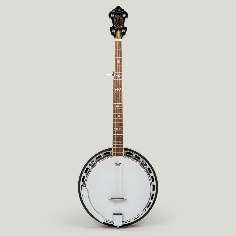
The Freedom 5
String Banjo
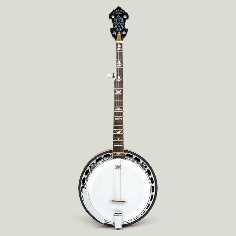
The Liberty
5-String Banjo
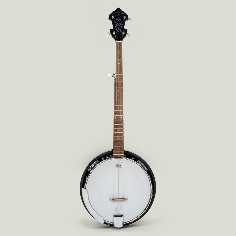
The Renegade
5-String Banjo
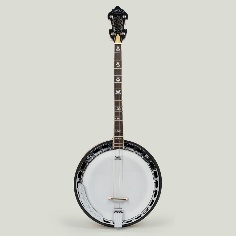
The Viking 4 String
Banjo
At McNeela, we specialise in Irish tenor and beginner 5-string banjos. Each instrument is crafted with care, professionally set up, and ready to play out of the box.
Explore our ranges:
Conclusion — Choosing Your First Banjo Type
There’s no single “best” banjo type — only the one that matches your goals. If you want to play reels and jigs in an Irish session, go for a tenor. If you dream of bluegrass rolls, choose a 5-string. And if you’re already a guitarist or ukulele player, hybrids like the banjitar or banjolele make the transition easy.
At McNeela, we specialise in Irish tenor banjos: every banjo is professionally set up in Dublin before shipping, so beginners can start playing with confidence.
Watch — Hear How a Well-Set-Up Banjo Sounds
McNeela Music Instruments: Discover The Tradition Behind The Music
From humble beginnings to prolific purveyors of quality traditional Irish instruments to musicians all over the world. Even if you’re just learning about the different banjo types, it helps to hear how a properly set up instrument should sound — no matter which banjo type you choose.
Frequently Asked Questions About Banjo Types
What is the difference between a 4-string and 5-string banjo?
A 4-string is tuned in fifths (like fiddle/mandolin) and ideal for melody; a 5-string has a drone string and suits bluegrass and folk.
Which type of banjo is best for beginners?
Most beginners do well with either a 4-string tenor (for Irish music) or a 5-string (for bluegrass/folk). Both are available in beginner-friendly models. Your style of music (Irish vs. bluegrass) should guide the decision.
What is a banjitar?
A 6-string banjo tuned like a guitar, designed for guitarists wanting a banjo sound.
What’s the difference between a plectrum and a tenor banjo?
Both have 4 strings, but the plectrum has a longer neck and is tuned CGBD, suiting jazz chords; the tenor is shorter and tuned GDAE for Irish trad.
Can you play Irish music on a 5-string banjo?
Technically yes, but the 4-string tenor is traditional and better suited to the style.
What is the easiest type of banjo to play?
For many beginners, a 4-string tenor banjo feels easier due to fewer strings and straightforward tuning. Guitarists, however, often find 6-string “banjitars” easiest, since they use standard guitar tuning.
Which is easier to play, a 4 or 5-string banjo?
It depends on style: the 4-string (tenor) is easier for melody playing, while the 5-string is better for bluegrass rolls. Neither is “better,” but 4-string may feel simpler at first.
Is clawhammer or bluegrass banjo harder?
Clawhammer focuses on rhythm and melody with the thumb and back of the nail, while bluegrass uses fingerpicks and rapid rolls. Both take practice — clawhammer feels natural to some, while bluegrass demands speed and precision.
What is a small banjo called?
Small banjos include 17-fret tenor banjos, banjoleles (banjo ukuleles), and travel banjos. They’re lightweight, compact, and great for kids or casual playing.
What is a big banjo called?
Full-size 19-fret tenor banjos and resonator 5-strings are often considered “big” banjos. Some extended-scale or 12-inch pot banjos also qualify as large-bodied, producing more volume and deeper tone.
Further reading & shopping
- Best Banjos Under $500
- 5-string vs 4-string Banjo
- Ultimate Beginner’s Banjo Buyer’s Guide
- Irish Tenor Banjo Buyer’s Guide
- Explore All String Instruments
Quick links:

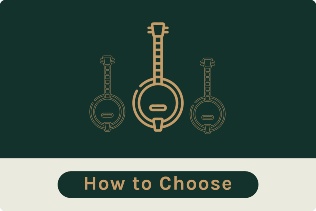




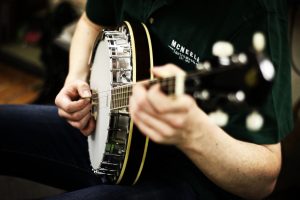

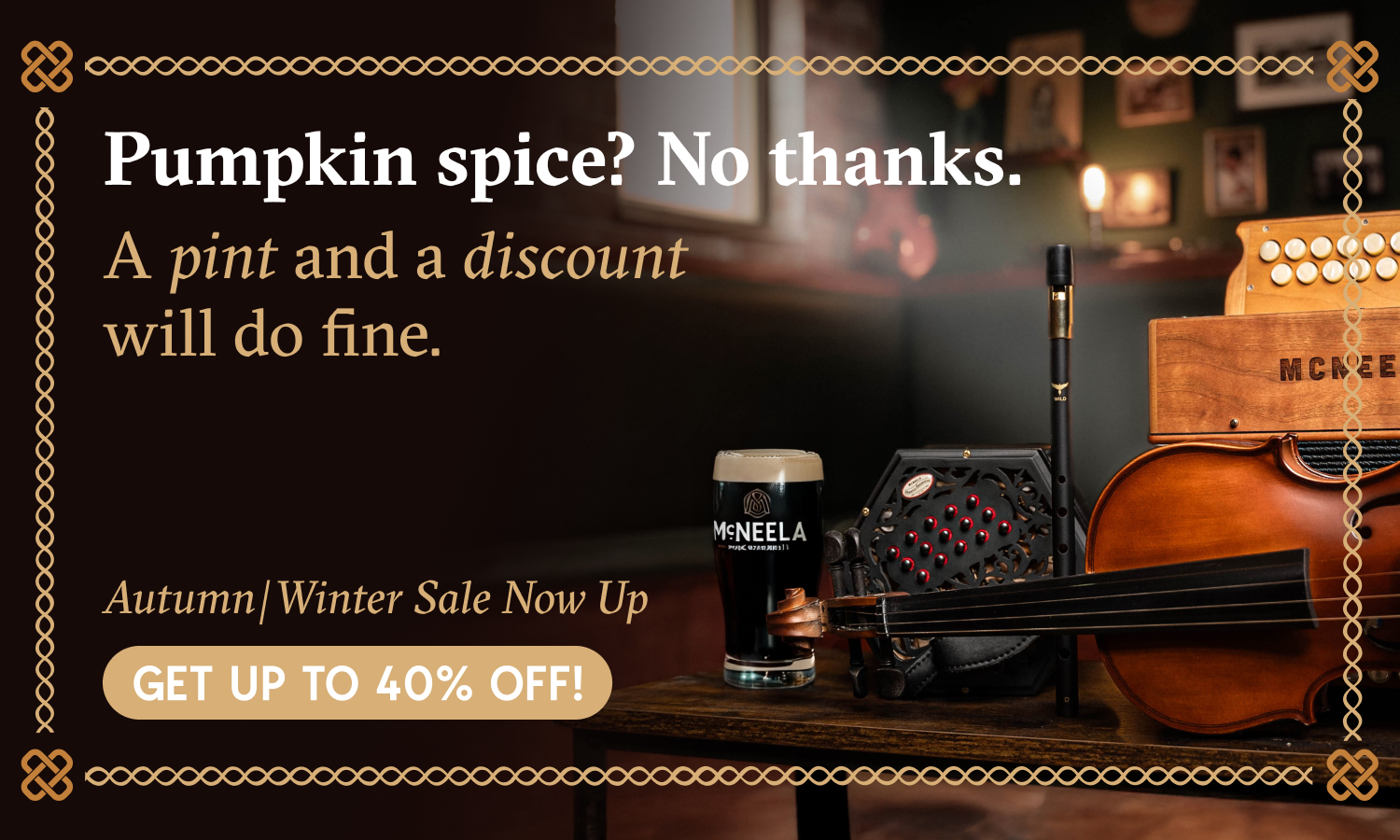
Share your thoughts